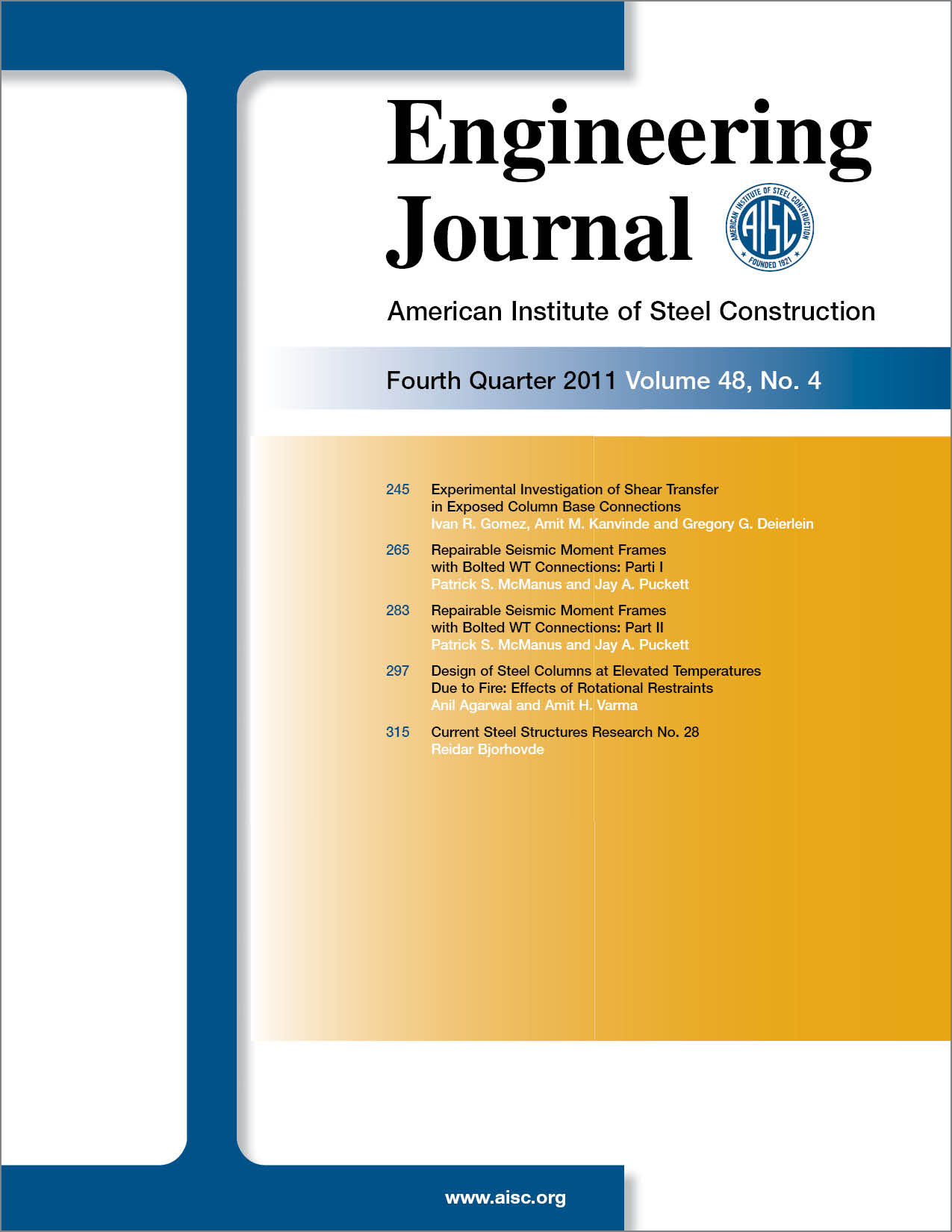Design of Steel Columns at Elevated Temperatures Due to Fire: Effects of Rotational
DOI:
https://doi.org/10.62913/engj.v48i4.1018Keywords:
fire, elevated temperatures, steel column, design equation, FEMAbstract
The stability of steel building structures under fire loading is often governed by the performance of the gravity load resisting systems. The inelastic buckling failure of gravity load bearing columns can potentially initiate and propagate stability failure of the associated subsystem, compartment or story. This paper presents a design methodology for wide-flange hot-rolled steel columns (W-shape) under uniform compression at elevated temperatures. A number of simply supported W-shape columns were modeled and analyzed using the finite element method (FEM). The analysis for axial loading followed by thermal loading was conducted using the nonlinear implicit dynamic analysis method to achieve complete stability failure. The models and analysis approach were validated using the results of existing column test data at elevated temperatures. The analytical approach was used to expand the database and to conduct parametric studies. The results are compared to existing column design equations at elevated temperatures and are used to propose revisions to the AISC ambient temperature design equations for steel columns to account for the effects of elevated temperatures and rotational restraints from cooler columns above and below the heated story.

